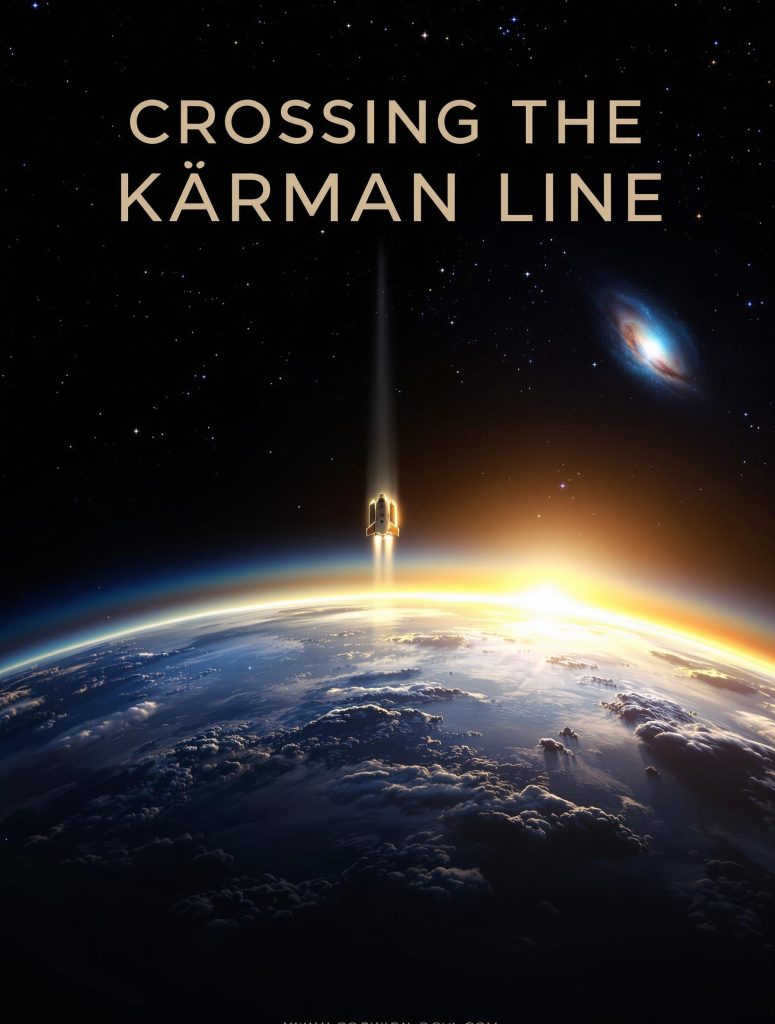When discussing the boundary between Earth and space, one term frequently comes up: the Kármán line. This boundary, though invisible, holds profound significance in aerospace science, space law, and the public imagination. But what exactly is the Kármán line, and why is it so important? stay at spaceyv
Defining the Kármán Line
The Kármán line is a theoretical boundary located 100 kilometers (62 miles) above sea level. It is widely regarded as the point where Earth’s atmosphere becomes too thin to support conventional aeronautical flight, transitioning into the domain of outer space. This definition, however, is not universally accepted, and different organizations sometimes use varying altitudes to define the start of space.
The line is named after Theodore von Kármán, a Hungarian-American engineer and physicist who calculated that around this altitude, an aircraft would need to travel faster than orbital velocity to generate enough aerodynamic lift to stay aloft. Beyond this point, the forces of aerodynamic flight give way to orbital mechanics—the physics governing objects in space.

Why Does the Kármán Line Matter?
The importance of the Kármán line spans several fields, including space exploration, international law, and even tourism. Here’s why this imaginary line is so crucial:
1. The Threshold of Space
The Kármán line is a useful marker for distinguishing between activities governed by aeronautics (flight within the atmosphere) and astronautics (flight in space). While the Earth’s atmosphere doesn’t abruptly end at 100 kilometers, this altitude serves as a clear dividing line for practical and legal purposes.
2. Legal Implications in Space Law
International treaties, such as the Outer Space Treaty of 1967, establish rules for space exploration and the use of celestial bodies. While the treaty doesn’t explicitly mention the Kármán line, this boundary is often referenced in discussions about national airspace versus outer space. Above the Kármán line, no nation can claim sovereignty, which has critical implications for satellite deployment, space stations, and commercial ventures.
3. Scientific and Engineering Milestones
For aerospace engineers, the Kármán line represents a milestone in overcoming Earth’s gravitational and atmospheric barriers. Reaching this altitude requires overcoming significant technical challenges, including dealing with high speeds, extreme temperatures, and the thinning atmosphere.
4. Space Tourism and Commercial Ventures
The burgeoning space tourism industry, led by companies like Blue Origin and Virgin Galactic, often markets trips to the Kármán line as a journey to “space.” Passengers experience weightlessness and a stunning view of Earth. Reaching or surpassing the Kármán line provides a tangible milestone for defining the “edge of space,” adding allure and legitimacy to these ventures.
5. Cultural and Symbolic Significance
Crossing the Kármán line holds symbolic value, representing humanity’s push beyond earthly confines. Astronauts, scientists, and dreamers alike see it as a gateway to exploration, innovation, and the unknown.
Is the Kármán Line Universally Accepted?
Interestingly, not everyone agrees on the exact altitude of the Kármán line. The Fédération Aéronautique Internationale (FAI), which governs aeronautical and astronautical records, recognizes 100 kilometers as the boundary. However, the United States Air Force and NASA often use 80 kilometers (50 miles) as the threshold for awarding astronaut wings.
This discrepancy arises from the gradual thinning of Earth’s atmosphere. There is no sudden break; instead, atmospheric density decreases exponentially with altitude. The choice of 100 kilometers is somewhat arbitrary but remains the most widely accepted standard.

Challenges at the Kármán Line
Reaching the Kármán line is no small feat. Spacecraft must overcome Earth’s gravity, requiring speeds of about 28,000 kilometers per hour (17,500 miles per hour) to achieve orbit. Rockets must also withstand the intense heat generated during ascent and re-entry through the atmosphere.
The Kármán line also marks the transition where atmospheric drag becomes negligible. Below this point, air resistance significantly affects flight dynamics; above it, spacecraft rely on thrusters and orbital mechanics.
Conclusion
The Kármán line, while an imaginary boundary, serves as a crucial concept in aerospace science, law, and culture. It marks the edge of Earth’s atmosphere and the beginning of outer space, providing a practical framework for defining human activities in both realms. Whether for astronauts breaking barriers, scientists pushing the frontiers of technology, or tourists marveling at Earth from above, the Kármán line represents humanity’s aspiration to explore beyond.
By understanding and appreciating the significance of the Kármán line, we gain a deeper insight into the challenges and triumphs of space exploration—a pursuit that unites us in our shared curiosity about the universe.
References
Von Kármán, T. (1956). Aerodynamics: Selected Topics in the Light of Their Historical Development. Cornell University Press.
International Astronautical Federation (IAF). “The Kármán Line: Where Space Begins.” Link
NASA. “What Is the Edge of Space?” Link
Outer Space Treaty of 1967. United Nations Office for Outer Space Affairs (UNOOSA). Link



